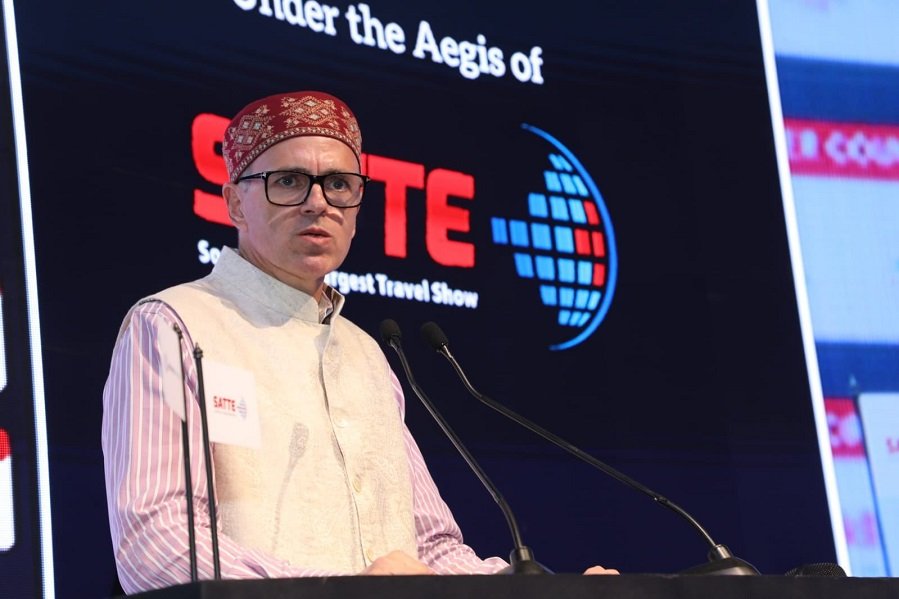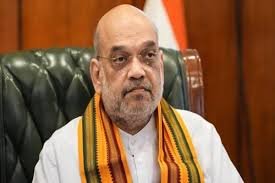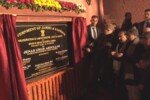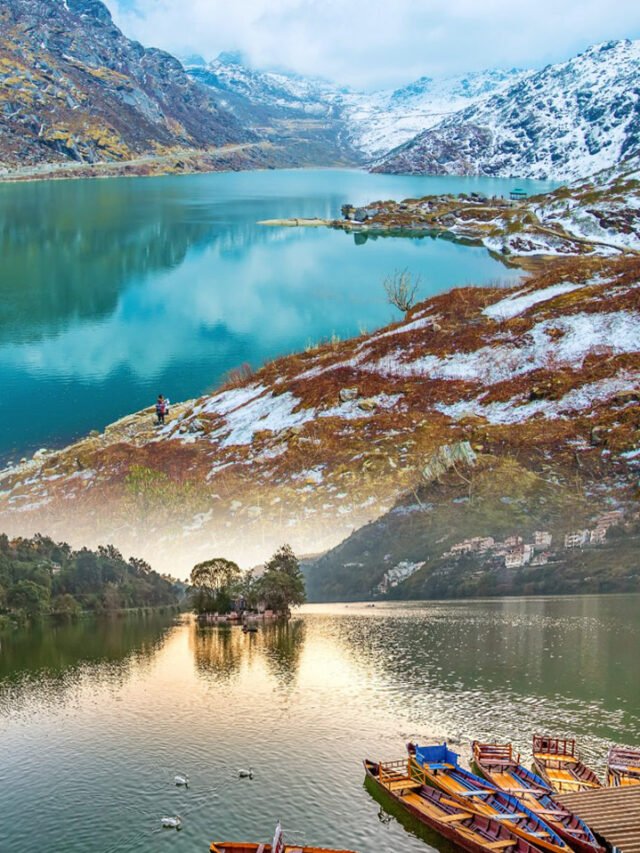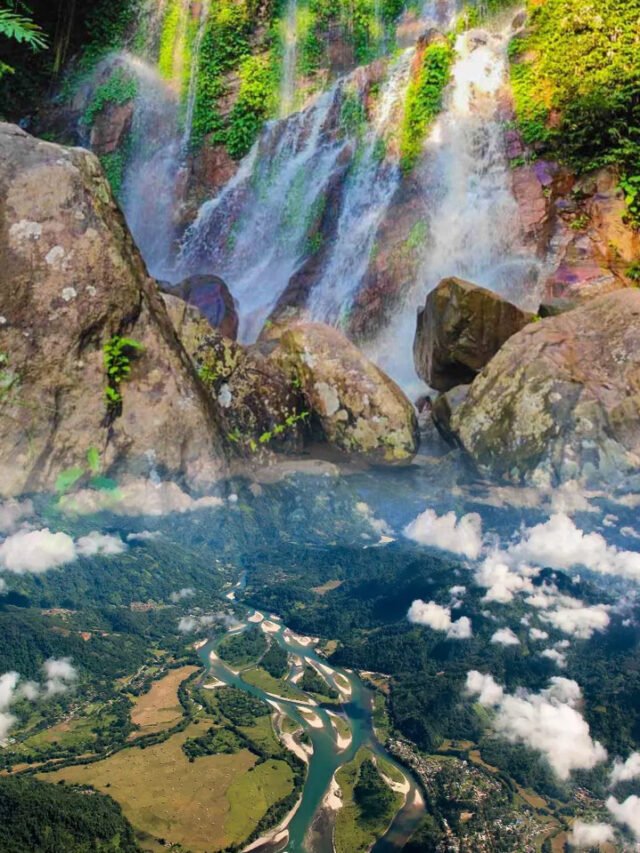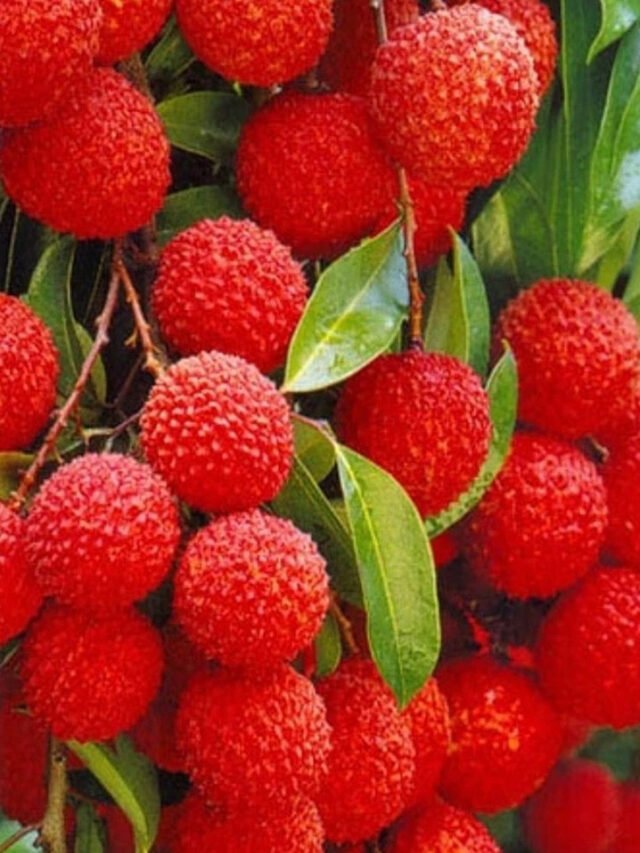New Delhi, Feb 19: Jammu and Kashmir is emerging out of the shadow of “evil eye” and is on verge of reclaiming its status as one of India’s leading tourism destinations, Chief Minister Omar Abdullah said on Wednesday.
He also invited people from across the globe to explore the picturesque region popularly known as ‘paradise on earth’.
Speaking at the inauguration of the SATTE exhibition at Yashobhumi here, Abdullah highlighted J&K’s rich and diverse offerings beyond its famous tourist spots like Gulmarg and Pahalgam or religious pilgrimage to Mata Vaishno Devi and Amarnath shrines.
Jammu and Kashmir offers a lot more to satisfy anyone from holiday makers to adventure sports lovers and influencers to social media enthusiasts, he said at the South Asia’s Travel and Tourism Exchange (SATTE).
The chief minister talked about improved connectivity between Kashmir and the rest of the country, including the direct rail link which is likely to start anytime soon.
“The shadow of evil eye resulted in a difficult time for J&K over the past 30 to 35 years but the region is now emerging out of it and is once again one of India’s prominent destinations for domestic tourism.
“International tourism is also picking up in spite of the difficulties that we have with travel advisories issued by various embassies and consulates,” Abdullah said, referring to the eruption of terrorism in early 1990.
Quoting famous Persian poet Amir Khusrau who once said “Gar firdaus, bar ruhe zamin ast, hamin asto, hamin asto, hamin ast (If there is paradise on this earth, it is here, it is here, it is here), Abdullah explained the cultural concept of ‘nazar’ (evil eye), suggesting that the region’s beauty has often been overshadowed by challenges.
He reminisced about the significance of J&K in Indian culture, mentioning that no honeymoon was complete without a stay on the houseboats of Dal Lake, and that Bollywood films often featured the region’s picturesque landscapes including mustard fields or from the snow-capped mountains of Kashmir.
However, the chief minister said that “Jammu and Kashmir is not resting on its laurels or trying to sell you a sob story…Jammu and Kashmir has something for everyone…Jammu and Kashmir is the right place now for any investment in the tourism industry”.
Abdullah asserted that J&K is a year-round destination, suitable for pilgrims, wedding celebrations, adventure seekers, and those looking to unwind in a scenic environment.
“Jammu is known as the city of temples, and there is significant potential for heritage and border tourism. Places like Gurez, once relatively unknown, are now among the fastest-growing tourist areas,” he said.
“…Kashmir border tourism on the Line of Control with Pakistan, whether we talk about Tangdhar, Machil, Karnah or Keran, these areas are seeing increasing numbers of visitors. J-K is about new meadows like Bangus and Doodhpathri,” he said.
The chief minister also referred to the potential of adventure tourism and said rafting in rivers, skiing in mountains, water skiing in Dal lake and Mansbal lake are yet to be fully explored.
“I have often said J-K is heaven on earth long before Kerala became the God’s own country. Please look at J-K as a destination for your next holiday, for your next visit, or for holding your conference or seminar,” he said.
Abdullah pointed out the region’s increasing focus on wellness and sports tourism, referencing upcoming marathons planned for the area.
“We had the Kashmir marathon and full marathon last year, and this year we intend to start the Jammu half marathon and Jammu ultra marathon while continuing with the Kashmir marathon,” he said.
Highlighting improvements in connectivity, Abdullah noted that direct rail links between Kashmir and the rest of the country are expected to be operational soon.
“Travelling to Kashmir has become significantly easier than in the past when there were only a few flights connecting Delhi and Srinagar. Today, there are direct flights from various cities, and soon, rail connectivity will further enhance accessibility,” he added.
Concluding his speech, he extended an open invitation to the audience, saying, “Please give us a chance to host you. We will ensure you leave with unforgettable memories and experiences.”
Taking to X after the event, the chief minister wrote, “Today I took the @OfficialDMRC AirPort Express to get to Yashobhumi for the SATTE 2025 Tourism promotion event. 25 minutes in the train beats 1.5 hours in the car hands down & saves fuel & emissions. I’m not driving to Yashobhumi again.” (PTI)
Sangam water fit for ‘snan’ and ‘aachman: UP CM Adityanath in Assembly
Lucknow, Feb 19: The water at the Sangam is fit for both bathing and ritual drinking (aachman) as confirmed by some recent reports, Uttar Pradesh Chief Minister Yogi Adityanath said Wednesday, amid claims it may contain high levels of faecal bacteria.
He told the state assembly that the Uttar Pradesh Control Board and the Central Pollution Control Board are continuously monitoring the water quality at the Sangam.
He also trained his guns at Opposition Samajwadi Party, saying the condition of the Ganga and Yamuna rivers was so poor while it was in power that the Prime Minister of Mauritius refused to take a dip during the 2013 Kumbh.
“This time, 81 drains have been tapped, treating 261 MLD (million liters per day) of sewage. In January and February, fecal coliform levels at the Sangam nose were found to be within the acceptable range, below 2,500 MPN per 100 ml, according to the UP Pollution (Control) Board,” he said, according to an official statement.
“The Central Pollution (Control) Board has also confirmed this in its report. The UP and Central Pollution Control Boards are continuously monitoring water quality, and recent reports confirm that the water at the Sangam is now fit for both bathing and ritual use,” Adityanath told the state Assembly.
He said the Maha Kumbh 2025 is being organised in a “grand” manner, while the 2013 edition suffered due to the “corruption, mismanagement”, administrative negligence and chaos of the SP rule.
There are better facilities and well-planned arrangements this year, but those responsible for the 2013 “mismanagement” are now criticising the 2025 Maha Kumbh, he said.
The CM also pointed out that after the stampede at the Prayagraj (then Allahabad) Station in 2013, the then head of the state government was attacking the Centre, then led by the Congress.
The Uttar Pradesh government was not receiving funds from the Centre then, and there was “corruption” in whatever money was spent as mentioned in the 2014 CAG report, he said.
Adityanath compared the 2013 and 2025 events, and said the duration of the Kumbh is determined by religious calculations.
He said the 2025 event will last 45 days, whereas it spanned 55 days in 2013.
The 2013 Kumbh covered an area of only 1,936 hectares (less than 5,000 acres), whereas the 2025 Maha Kumbh Mela area is more than 10,000 acres, he said.
He also said only 14 sectors were set up in the Kumbh Mela area in 2013, while in 2025, the number has increased to 25. The parking area has also seen major improvements, expanding from 635 hectares in 2013 to 1,850 hectares in 2025, accommodating more than 6,00,000 four-wheelers, he said.
The CM stated that in 2013, Prayagraj had no permanent ghats, riverfronts, or ROBs (Road Over Bridges), but nine ROBs and six underpasses had been built by 2019.
For the 2025 event, 14 flyovers, nine permanent ghats, and seven riverfronts have been prepared. The length of temporary ghats has increased from just 4 km in 2013 to 12 km in 2025, he added. (PTI)


